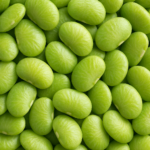
Chai, a beloved beverage that transcends borders and cultures, is more than just a drink—it’s a tradition steeped in history and flavor. From its origins in ancient civilizations to its status as a staple in modern households, chai has captured the hearts and palates of millions around the globe. Whether you enjoy it spiced, sweetened, or simply brewed to perfection, there’s no denying the warmth and comfort that a cup of chai brings. In this blog, we’ll explore 25 fascinating facts about chai that highlight its rich heritage, diverse preparation methods, and the vibrant culture surrounding this iconic drink. Join us as we delve into the world of chai and discover what makes it such a cherished part of daily life for so many!
Chai Definition and Origin: Chai, derived from the Hindi word for tea, has its roots in the Mandarin word “chá,” which means tea. In India, “chai” specifically refers to a traditional preparation that combines black tea, milk, and a variety of spices. This beverage is not just a drink but a cultural staple, deeply embedded in Indian society. The preparation of chai often involves boiling water with tea leaves, then adding milk and spices, creating a rich and aromatic drink that is enjoyed throughout the day in homes, roadside stalls, and cafes alike.
Global Tea Market: The global tea market was valued at approximately $200 billion in 2020, reflecting its immense popularity and cultural significance across the world. This market encompasses a wide range of tea types, including black, green, white, oolong, and herbal teas. The growth of this market has been driven by increasing health awareness among consumers, who are becoming more conscious of the health benefits associated with tea consumption, such as antioxidants and other beneficial compounds. Additionally, the rise of premium tea brands has contributed to the market’s expansion, as consumers seek high-quality and unique tea experiences.
India’s Tea Production: India stands as the largest tea producer globally, contributing about 22% of the world’s total tea production. Renowned for its diverse varieties, India produces famous teas such as Assam and Darjeeling, each with distinct flavors and characteristics. In 2019, India’s tea production exceeded 1.3 million metric tons, showcasing its vital role in the global tea industry. The tea plantations in India, often located in lush, hilly regions, not only contribute to the economy but also provide employment to millions, making tea cultivation a crucial aspect of rural livelihoods.
Indian Tea Consumption: The average Indian consumes about 1.1 kg of tea per year, highlighting the beverage’s cultural significance within daily life. Tea is often served as a gesture of hospitality to guests and is an integral part of social gatherings. The ritual of brewing and sharing chai fosters community and connection among people. In many households, chai is consumed multiple times a day, and its preparation can vary by region, reflecting local preferences and traditions.
Traditional Chai Preparation: Traditional chai involves brewing black tea for 3-5 minutes to extract its robust flavors. This preparation typically starts with boiling water, to which tea leaves are added. Once the tea is brewed, milk is incorporated, often in equal parts, creating a creamy and flavorful drink. The addition of spices, such as cardamom and ginger, enhances the taste and aroma, making chai a comforting beverage enjoyed by many. The process of making chai is often seen as an art, with each family having its unique recipe and method.
Tea’s History: The history of tea dates back to 2737 BCE in China, where it is believed to have been discovered by Emperor Shen Nong. Initially used for medicinal purposes, tea gradually evolved into a popular beverage enjoyed by various cultures. Over centuries, tea spread from China to other parts of Asia and eventually to Europe and the Americas, transforming into a global phenomenon. Its rich history is woven into the fabric of many societies, influencing trade, culture, and social customs.
British Influence on Indian Tea: The British played a significant role in the introduction of tea to India in the early 19th century. Recognizing the potential for tea cultivation, they established plantations, particularly in regions like Assam and Darjeeling. The British not only commercialized tea production but also transformed it into a lucrative industry. This led to the establishment of a tea culture in India that blended local traditions with British practices, resulting in the unique chai preparation we see today.
Masala Chai Spices: Masala chai, a popular variation of traditional chai, incorporates a mix of spices such as cardamom, ginger, cloves, and cinnamon. These spices not only enhance the flavor but also offer various health benefits, including digestive aid and anti-inflammatory properties. The combination of spices can vary by region and personal preference, making each cup of masala chai a unique experience. This spiced tea has gained popularity beyond India, becoming a favorite in cafes worldwide.
Milk in Chai: The milk content in chai can range from 1% to 5%, depending on individual preferences and regional variations. Some enjoy their chai with a higher milk ratio for a creamier texture, while others prefer a stronger tea flavor with less milk. The choice of milk can also vary, with options including cow’s milk, almond milk, soy milk, and more, catering to different dietary preferences. This versatility allows chai to be enjoyed by a wide range of people, regardless of their dietary restrictions.
Caffeine in Black Tea: Black tea, the primary ingredient in chai, contains approximately 40-70 mg of caffeine per 8 oz cup. This caffeine content provides a mild stimulant effect that can help enhance alertness and focus. Unlike coffee, which generally has a higher caffeine content, black tea offers a gentler boost, making it suitable for those who are sensitive to caffeine. The presence of L-theanine, an amino acid found in tea, also contributes to a more balanced energy experience, promoting relaxation without drowsiness. This makes chai a popular choice for many who seek a comforting beverage that can provide both warmth and a mild pick-me-up throughout the day.
Sweeteners in Chai: Chai is often sweetened to enhance its flavor, with common sweeteners including sugar or jaggery. Typically, 1-3 teaspoons of sweetener are added per cup, depending on personal taste preferences. Jaggery, a traditional unrefined sugar made from cane juice or palm sap, is particularly popular in India, as it adds a rich, caramel-like flavor to the drink. The sweetness of chai not only balances the spiciness and bitterness of the tea but also contributes to its comforting and indulgent nature, making it a beloved beverage across various cultures.
Chai Wallahs: Chai wallahs, or tea vendors, are a familiar sight in India, often found serving chai from roadside stalls or on trains. These vendors play a crucial role in the daily lives of many, providing a quick and affordable way to enjoy chai. Chai wallahs typically prepare the tea fresh on the spot, using traditional methods and local ingredients. Their presence fosters a sense of community, as people gather to enjoy a cup of tea and engage in conversation. The chai wallah culture is an integral part of India’s social fabric, symbolizing hospitality and warmth.
Serving Chai: Chai is typically served in small cups or glasses, often made from clay or stainless steel. The use of clay cups, known as “kulhads,” is particularly popular in rural areas, as they impart a unique flavor to the tea and are eco-friendly. Serving chai in smaller portions encourages sharing and social interaction, as it is common for friends and family to enjoy multiple rounds together. The presentation of chai can vary, with some opting for a simple serving while others incorporate decorative elements, reflecting the occasion and the host’s hospitality.
Chai Prices in India: The average price of chai in India ranges from ₹10 to ₹30 (approximately $0.13 to $0.40), making it an accessible beverage for people from all walks of life. The affordability of chai has contributed to its popularity, as it serves as a daily ritual for many. Prices can vary based on location, with urban areas typically charging a bit more than rural settings. Despite the low cost, the experience of enjoying chai—whether at a bustling roadside stall or in the comfort of home—remains invaluable, fostering connections and community.
Brewing Chai Traditionally: Traditional chai is brewed with water first, allowing the tea leaves to steep and release their flavors before milk is added. Typically, a 1:1 ratio of water to milk is used, though this can be adjusted based on personal preference. The brewing process takes about 5-10 minutes, during which spices may also be added to enhance the flavor. This method of preparation not only results in a rich and aromatic beverage but also represents a cherished tradition passed down through generations, with each family adding their unique touch to the recipe.
Doodh Patti: In some regions of India, a variation known as “doodh patti” is popular, which involves boiling milk with tea leaves directly for a creamy and rich beverage. This method results in a stronger tea flavor, as the milk and tea are cooked together, allowing the flavors to meld beautifully. Doodh patti is often enjoyed as a special treat and is particularly favored in areas where milk is a staple ingredient. This preparation style exemplifies the diversity of chai across India, highlighting regional preferences and traditions.
Milk Varieties: Chai can be made with a variety of milk types, catering to different dietary preferences and restrictions. Common options include cow’s milk, which is traditional, as well as plant-based alternatives like almond milk, soy milk, and oat milk. Each type of milk brings its unique flavor and texture to the chai, allowing for customization based on individual taste. This adaptability has contributed to the growing popularity of chai in health-conscious and vegan communities, as people seek ways to enjoy this beloved beverage while aligning with their dietary choices.
Tea Bag Invention: The invention of the tea bag in 1908 by Thomas Sullivan revolutionized the way tea is brewed and consumed. Initially intended as a sample for potential buyers, the tea bags quickly gained popularity as a convenient way to prepare tea without the need for loose leaves and strainers. This innovation led to the widespread commercialization of tea, making it more accessible to consumers around the world. Today, tea bags come in various forms, including pyramid shapes and biodegradable materials, catering to the evolving preferences of tea drinkers seeking convenience without compromising on quality. The tea bag format has also allowed for a variety of flavored and specialty teas to be easily packaged and sold, further expanding the tea market.
Chai and Snacks: Chai is often served alongside a variety of snacks, enhancing the overall experience of enjoying this beloved beverage. Common accompaniments include biscuits, samosas, and pakoras, which provide a delightful contrast to the warm, spiced tea. The combination of chai and snacks is not just about taste; it also reflects the social aspect of tea drinking in Indian culture. Sharing food and drink is a way to foster connections among friends and family, making chai time a cherished ritual. The choice of snacks can vary widely by region and personal preference, adding to the rich tapestry of chai culture across India.
Indian Tea Industry Employment: The Indian tea industry is a significant source of employment, providing jobs to over 1 million people. This includes not only those directly involved in tea cultivation and production but also workers in processing, packaging, and distribution. Many of these jobs are located in rural areas, where tea estates serve as vital economic engines for local communities. The industry supports a wide range of livelihoods, from small-scale farmers to large plantation workers, and plays a crucial role in the socio-economic landscape of India. Efforts to improve working conditions and fair wages continue to be important topics within the industry.
Chai Preparation Time: The preparation of chai typically takes about 5-10 minutes, making it a quick and enjoyable process. This relatively short preparation time allows chai to be easily integrated into daily routines, whether at home or in bustling tea stalls. The simplicity of making chai also invites creativity, as individuals can experiment with different spices, milk types, and sweetness levels to tailor the drink to their liking. This ease of preparation has contributed to chai’s status as a beloved beverage, enjoyed at any time of day, whether in the morning, afternoon, or evening.
International Tea Day: International Tea Day is celebrated on May 21 each year, recognizing the cultural and economic importance of tea worldwide. This observance promotes the consumption of tea and raises awareness about the challenges faced by tea workers and producers. Events and activities on this day often include tea tastings, educational programs, and discussions about sustainable tea production practices. The celebration of International Tea Day highlights the global appreciation for tea, bringing together diverse cultures and communities around a shared love for this timeless beverage.
FAQs about Chai
1. What is chai?
“Chai” literally translates to “tea” in many languages. However, when people in the West talk about chai, they’re usually referring to masala chai, a spiced tea beverage originating from India. It’s a complex and comforting drink, traditionally made with black tea, a blend of spices (which can vary widely), milk, and a sweetener. Think of it as a warm, aromatic hug in a mug.
2. What are the typical spices in chai?
While spice blends vary regionally and even from family to family, some common ingredients include:
- Cardamom: Adds a sweet, floral, and slightly citrusy note. It’s often considered one of the most prized spices in chai.
- Cinnamon: Contributes a warm, sweet, and slightly spicy flavor. It’s a classic chai ingredient.
- Ginger: Provides a pungent, spicy, and warming kick. It’s great for digestion and adds depth to the chai.
- Cloves: Offers a strong, pungent, and slightly sweet flavor. Use them sparingly as they can be overpowering.
- Black Peppercorns: Adds a subtle heat and a bit of complexity. It might seem unusual, but it balances the sweetness and other spices.
- Star Anise: Imparts a distinct licorice-like flavor. It’s not as common as the other spices but adds a unique touch.
- Fennel Seeds: Offers a slightly sweet and anise-like flavor. It can add a subtle sweetness and aromatic complexity.
Other less common but sometimes included spices are nutmeg, mace, and bay leaf. The beauty of chai lies in the flexibility of the spice blend; it’s all about personal preference!
3. What kind of tea is used in chai?
Traditionally, a strong black tea is used as the base for masala chai. Assam and Darjeeling teas from India are popular choices because they can stand up to the strong spices and milk. However, other black teas like Ceylon or even a robust blend can be used. The key is to use a tea that has a strong flavor and doesn’t get lost amongst the spices.
4. How do you make chai?
There are many ways to make chai, but here’s a general method:
- Crush the spices: Lightly crush the whole spices (cardamom pods, cinnamon sticks, etc.) to release their aromas. You can use a mortar and pestle or gently crush them with the back of a knife.
- Combine spices and tea: In a saucepan, combine the crushed spices, tea leaves, and water.
- Simmer: Bring the mixture to a simmer and let it steep for about 10-15 minutes, or longer for a stronger brew. The longer you steep, the more intense the flavor will be. Be careful not to boil it vigorously, as this can make the tea bitter.
- Add milk and sweetener: Add milk (dairy or non-dairy) and your preferred sweetener (sugar, honey, jaggery, etc.) to the saucepan.
- Heat through: Heat the chai until it’s warm, but don’t boil it.
- Strain and serve: Strain the chai through a fine-mesh sieve into your cup.
5. What kind of milk is best for chai?
Traditionally, full-fat dairy milk (like cow’s milk or buffalo milk) is used in chai, giving it a rich and creamy texture. However, many people use non-dairy milk like almond milk, oat milk, soy milk, or coconut milk. The choice of milk depends on your dietary preferences and desired flavor profile. Oat milk tends to be a popular choice as it often creates a creamy texture similar to dairy.
6. How much caffeine is in chai?
The caffeine content of chai depends on the type of tea used. Since traditional masala chai uses black tea, it will contain caffeine, though generally less than a cup of coffee. The exact amount can vary depending on the strength of the brew and the type of black tea. If you’re looking for a caffeine-free option, you can make chai with herbal teas or rooibos.
7. What are the health benefits of chai?
Chai, thanks to its spices, can offer several potential health benefits:
- Antioxidants: Spices like ginger, cinnamon, and cloves are rich in antioxidants, which can help protect the body against damage from free radicals.
- Improved digestion: Ginger is known for its digestive benefits and can help soothe an upset stomach.
- Anti-inflammatory properties: Some spices, like ginger and turmeric (sometimes added to chai), have anti-inflammatory properties.
- Heart health: Some studies suggest that black tea and certain spices may be beneficial for heart health.
However, it’s important to note that these are potential benefits, and more research is needed. Also, the amount of spices in a typical cup of chai might not be enough to have a significant impact on health. And, remember that chai often contains added sugar, so it’s important to consume it in moderation.
8. Where can I buy chai?
You can buy chai in various forms:
- Tea bags: Convenient for a quick cup, but the flavor might not be as complex as from loose leaf tea and spices.
- Loose leaf tea and spices: Allows you to customize your spice blend and control the strength of the brew.
- Chai concentrates: Pre-made blends that you simply mix with milk and heat. These can be convenient but may contain added sugars.
- Ready-to-drink chai lattes: Available in many cafes and grocery stores.
9. How do I store chai?
Store loose leaf tea and spices in airtight containers in a cool, dark, and dry place. This will help preserve their flavor and aroma. Pre-made chai concentrates should be stored according to the manufacturer’s instructions, usually in the refrigerator after opening.
10. Is chai the same as chai latte?
While the terms are often used interchangeably, there’s a slight difference. “Chai” refers to the spiced tea itself. “Chai latte” typically refers to chai that’s been prepared with steamed milk, often creating a frothy top, similar to a latte. So, a chai latte is a type of chai beverage.









